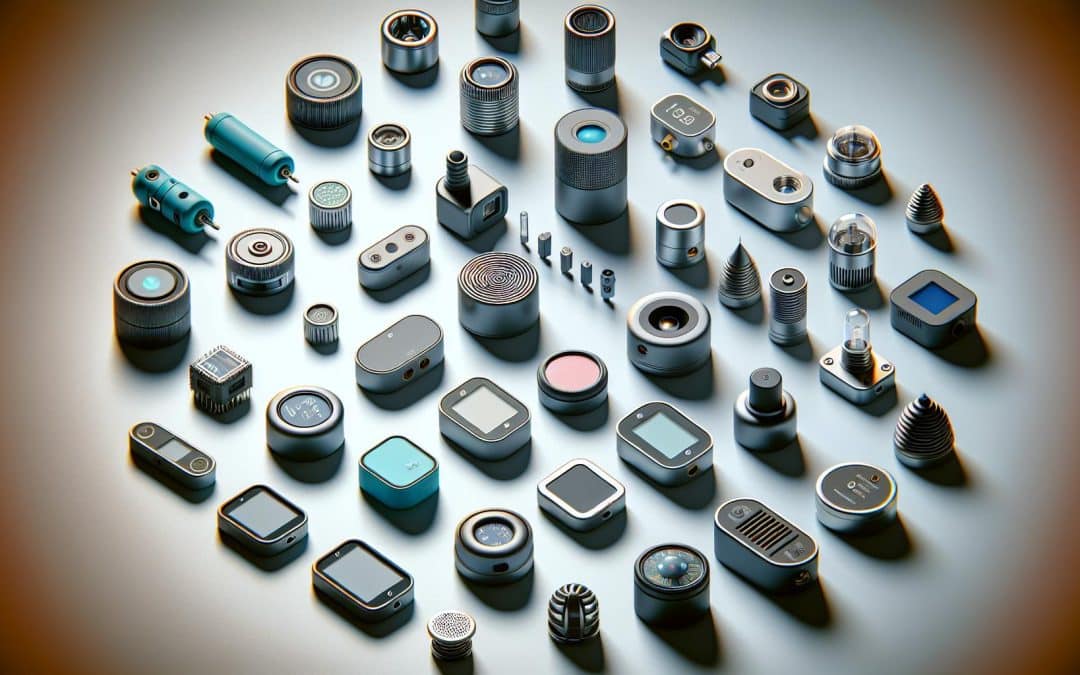IoT sensors are revolutionizing industries by enabling smart, connected systems that improve efficiency and provide valuable data insights. This article explores the types, applications, and benefits of IoT sensors across various sectors.
Key Takeaways
- IoT sensors collect and transmit data on factors like temperature, humidity, motion, and pressure to enable automation and efficiency gains.
- Common types include temperature, humidity, motion, proximity, pressure, and optical sensors.
- Key applications are in smart homes, healthcare, agriculture, urban planning, and industrial automation.
- Benefits include improved efficiency, cost savings, data-driven insights, and enhanced safety.
- Future trends involve miniaturization, energy efficiency, edge computing, and AI integration.
Understanding IoT Sensors
IoT sensors gather data from physical objects and transmit it to other systems, forming the foundation of IoT ecosystems. They collect various data types to enable smart functionality across applications.
Types of IoT Sensors
- Temperature Sensors: Measure ambient or object temperature for HVAC, food storage, etc.
- Humidity Sensors: Monitor air moisture for agriculture, weather forecasting, climate control.
- Motion Sensors: Detect movement for security, smart lighting, automated doors.
- Proximity Sensors: Identify object presence/distance for parking systems, smartphones, robotics.
- Pressure Sensors: Measure applied force for hydraulics, weather monitoring, medical devices.
- Optical Sensors: Capture light data for cameras, ambient light adjustment, optical recognition.
Applications of IoT Sensors
- Healthcare: Monitor vitals, manage medication, enhance telemedicine.
- Agriculture: Enable precision farming, soil monitoring, livestock tracking, irrigation optimization.
- Urban Planning: Manage traffic, monitor air quality, improve public services.
- Industrial Automation: Streamline manufacturing, predict equipment failures, manage supply chains.
- Smart Homes: Automate lighting, heating, security for efficiency and convenience.
Benefits of IoT Sensors
- Efficiency: Automate processes to reduce manual intervention.
- Cost Savings: Identify issues quickly to prevent expensive downtime/repairs.
- Data-Driven Insights: Enable informed decisions through continuous data collection.
- Improved Safety: Detect hazards to enhance workplace safety and compliance.
Future Trends in IoT Sensors
- Miniaturization: Smaller, more efficient sensors for seamless integration.
- Energy Efficiency: Low-power sensors to extend battery life.
- Edge Computing: Process data closer to source to reduce latency/bandwidth use.
- AI Integration: Combine with AI for improved analysis and automation.
Key Features to Consider
When evaluating IoT sensors, consider these important features:
Accuracy
Accuracy determines how closely measurements reflect actual values. High accuracy is crucial for applications like healthcare monitoring. Review manufacturer specifications and user reviews to assess accuracy for your needs.
Battery Life
Long battery life is essential for sensors in remote locations. Energy-efficient components and power management extend longevity. Industrial sensors often require multi-year battery life.
Connectivity Options
Common protocols include Wi-Fi, Bluetooth, ZigBee, and LoRaWAN. Choice impacts data transfer speed, range, and power use. For example, LoRaWAN suits long-range, low-power agricultural applications.
Conclusion
IoT sensors are transforming industries by providing critical data and enabling automation. When selecting sensors, carefully evaluate accuracy, battery life, and connectivity to ensure optimal performance for your application. As IoT technology advances, these sensors will play an increasingly vital role in enhancing productivity and driving innovation across sectors.
To learn more about implementing IoT sensors in your operations, consult with IoT solution providers or industry experts who can assess your specific needs and recommend the most suitable sensor types and configurations.

